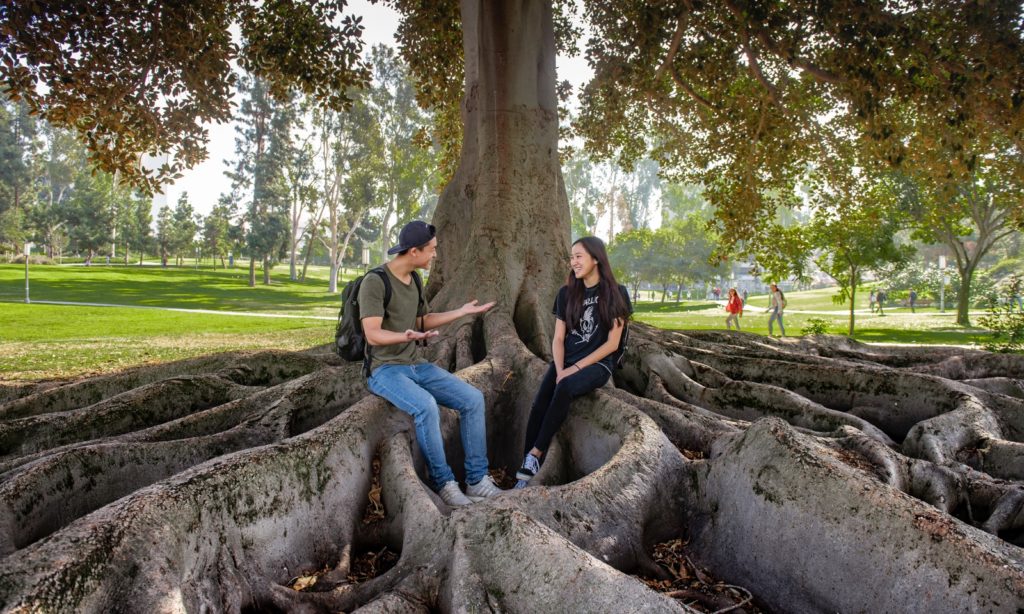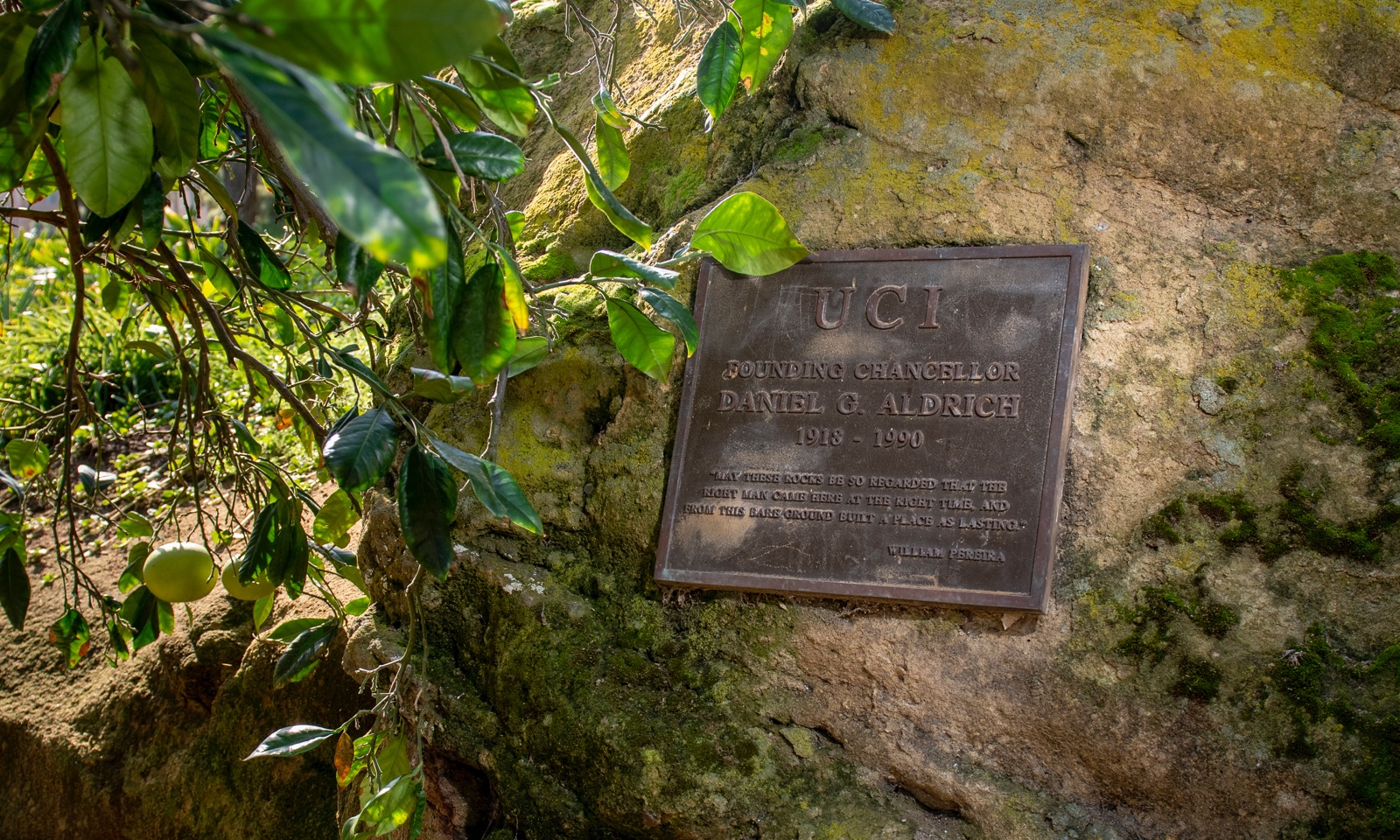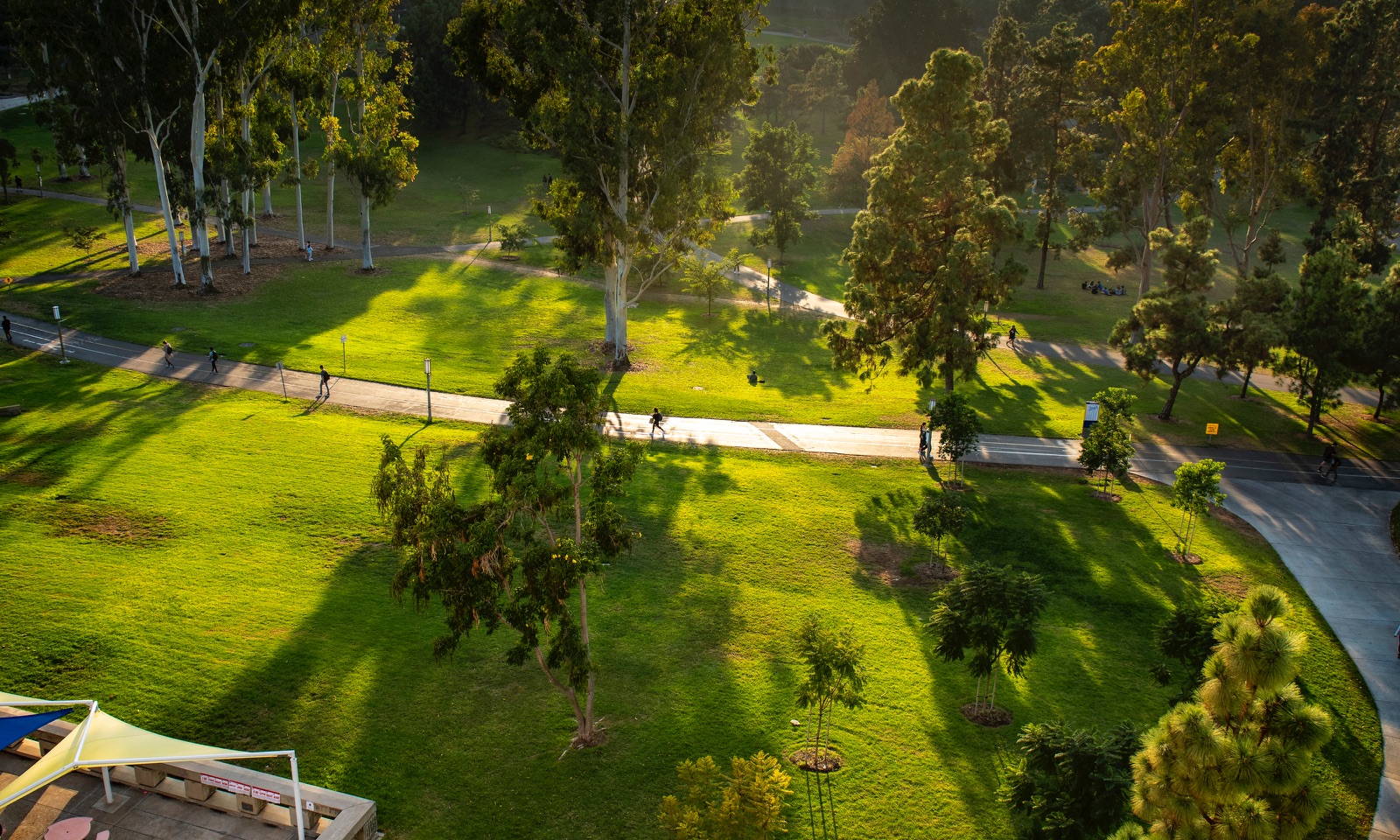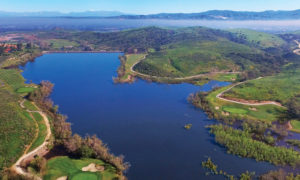Under the boughs of a citrus tree, on a mossy rock in Aldrich Park, lies a bronze plaque that marks the birthplace of Irvine.
Each day, thousands walk past but few know that six decades ago this very spot was chosen as the center of UC Irvine — and the city planned around it. If there is a heart of Irvine, it is here.
“Entering that park is like passing through a gate,” says attorney Robert Morrow, who graduated from UCI in 1990. “You leave civilization and suddenly you’re in the middle of this pure nature.”
The park forms a 19-acre circle of green slopes, gardens and trees. And it forms the model for how Irvine would be designed: a park connected to a school, connected to a village, connected to open space stretching to the ocean.
Aldrich Park, it turns out, is the story of Irvine.
And it begins with the park’s namesake: Daniel Aldrich Jr.
Irvine’s first park
Daniel Aldrich Jr. was UC’s dean of agriculture in 1961 when he was asked to be founding chancellor of a new UC campus on an Irvine Ranch cattle pasture.
The idea was to build a campus as the centerpiece of a new “city of intellect” — the future city of Irvine.
Aldrich said yes and began working with famed architect William Pereira, who was creating a master plan for both campus and city. Together, they scouted the 1,000 acres that Irvine Company gave UCI for $1 and noticed a rocky outcropping in one pasture. That’s our central point, Aldrich said.
Pereira designed a circular park around that rock, with a campus of concentric rings emanating out — a metaphor for knowledge spreading out to the world.
Aldrich then began transforming this barren landscape into an urban forest. He germinated seeds in hothouses and mist rooms at UCLA, and established a UCI nursery to grow native and exotic seedlings.
Today, Aldrich Park features 51 varieties of trees, some over 100 feet tall, and stands as Irvine’s first park.
“From the beginning, our founders had in mind a new paradigm of public-private partnership, so the Master Plan for the campus and the Master Plan for the city of Irvine were designed as one,” UCI Chancellor Howard Gillman said. “That was the start of it all.”
City of intellect
Universities are known for their central squares. Think Harvard or Dartmouth. But none have what UCI offers: a vast circular park as its core, ringed by each of the university’s major disciplines.
“Aldrich Park gives us a different feel from almost any other university,” says ecology and evolutionary biology professor Timothy Bradley, who’s taught at UCI for 39 years. “Whenever you walk from one building to another, you’re in this natural environment.”
Some call it a natural respite. Some call it a melting pot of ideas and cultures. Others call it a magical world of exotic trees, sculptures and rock gardens.
Early plans called for a 300-foot tall bell tower, called “The Centrum,” at its core. But that gave way to preserving the original rock outcropping, known as Aldrich Rock Garden.
There, in the shade of a citrus tree, you’ll find a plaque dedicated to Aldrich. It reads:
“May these rocks be so regarded that the right man came here at the right time and from this bare ground built a place as lasting.”











